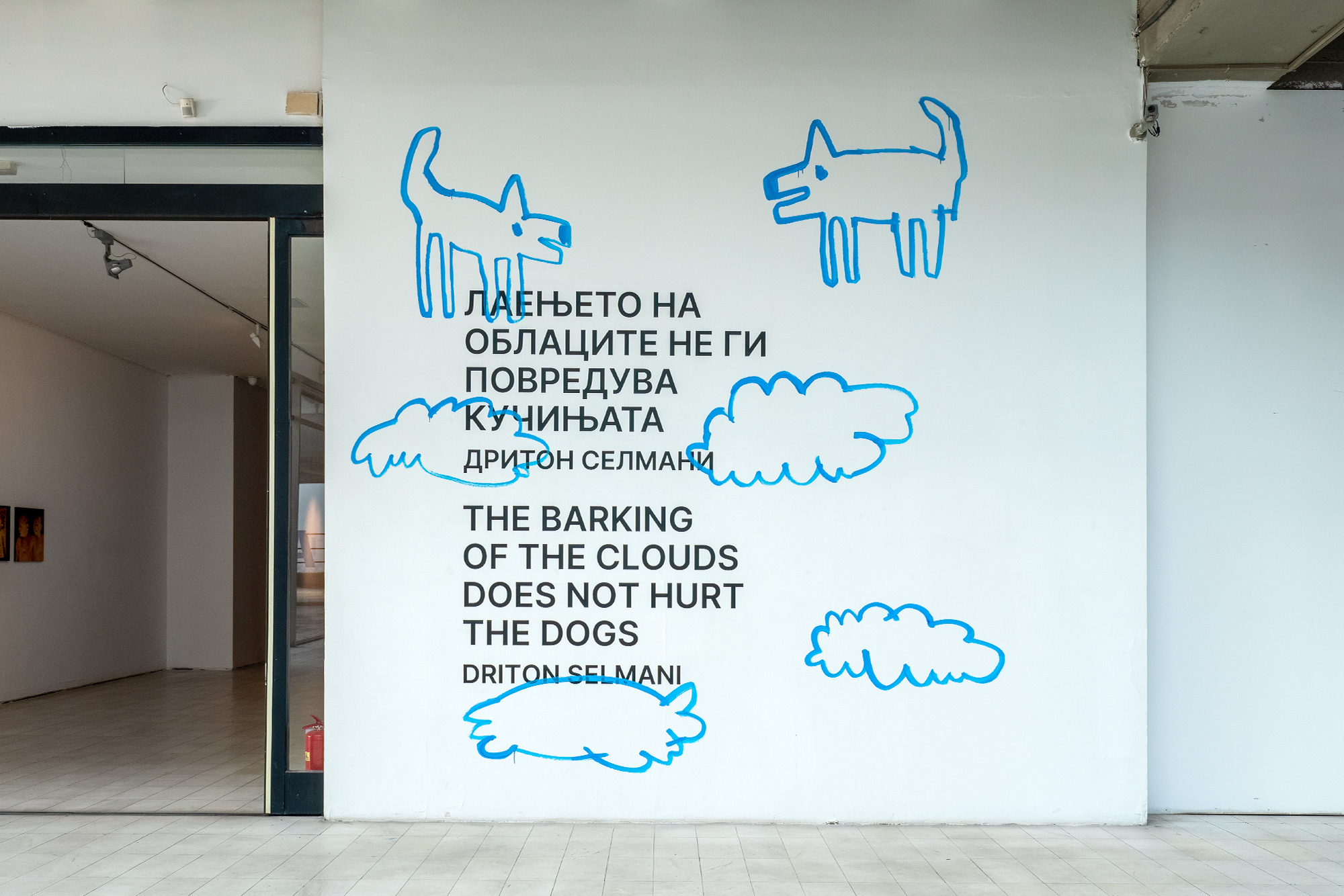 The Barking Of The Clouds Does Not Hurt The Dogs
The Barking Of The Clouds Does Not Hurt The Dogs

[ click to view slideshow ]
EXHIBITION TEXT
EXHIBITION WEB
EXHIBITION PRESS
The contemporary world often reveals to us as paradoxical, so this is why contemporary art, that through unrelated objects, small adaptations, unusual arrangements and specific juxtapositions can thoughtfully open a door toward understanding the complexities and contradictions of everyday life.
‘A door must be either opened or closed’ Art usually responds to such state- ments with a new challenge. The year is 1927. Exactly 85 years ago, (our mutual great-grandfather) Marcel Duchamp decided to problematize this arrogant truism, and the result is one strange but practical solution for the door in his Paris studio, at 11 rue Larrey.
Watermelons, plastic bags, a neon sign with text, school blackboard, old family photo, a knife, a coat... What is the relationship between all these things? The knife has an eraser, the coat has a double pair of sleeves, the bags have care- fuly inscriptions, as ‘Love Letters’... They are all connected by the interventions of the artist Driton Selmani.
The starting point in the conceptualization of the exhibition was defined by several parameters: the exhibition space and the specific moment in the artist’s career, the notable rise of the art scene that he belongs to, as well as the MoCA-Skopje strategy for the future. The title piece, which was specifically made for the roof of the glass atrium space of the Museum, also corresponds to the paradoxical position of being both inside and outside at the same time. Thus, the placelessness of any wayward wandering international emancipated spirit is metaphorically depicted, just as Baudelaire depicts freedom as unboundedness in his poem ‘The Stranger’.
The video These stories (2018), is conceived as a simple contrast of the image and the text, as a dialogue with the unequal distribution of the future. Interest- ingly, the narration is connected with the opening part of the novel “The Stub born Ones” by Slavko Janevski, written in the same year of 1969.
Two other works are exhibited for the first time at this exhibition. “Doppelschlag (Double blow)”, a family photo that, although small in size, creates a secondary but strong family connection with Skopje. the canvas titled Sinister Hand is a warning image, which, in relation to the other works, anchors the exhibition very strongly in the current moment, when the redrawing of maps and the threats of expansion of the theatre of conflict is greater. Presenting a diversity of works in a selection of already existing works and a site-specific intervention in the space of the MoCA-Skopje, the exhibition of text-based works, objects and video, tries to establish new relations in the given context, clearly showing the ways in which Selmani wittily uses a specific form of humor to investigate and question the familiarity of everyday, usually bound in absurd traditions and hierarchical structures.
Selmani’s wide array of works focusing on diverse issues of our contemporary predicament ranging from popular culture, to the dominant discourses of power that are shaping our lives, questioning historical narratives, stereotypes, the sense of belonging and exclusion. Driton Selmani’s works are always constructed as an imaginary dialog, either with an audience, or even with oneself, as a series of short statements, or probing rhetorical questions, opening new perspectives to our understanding of ourselves, the commons, and different aspects of contemporary life.
The very title of the show, makes it clear how Selmani uses unexpected juxta- positions and irony - twisting a Berber prober, with a reference to a verse from one of his favorite poems, Stranger (L’Etranger) by Charles Baudelaire. In fact, he deliberately seeks and finds the points where language breaks, it opens a gap, a crack between the things, the words and the newly constructed image, transforming the familiar into a weirdly unique situation, and then back from the fictitious to the understanding of the everyday. Intervening in the realm of language, from old popular wisdom to poetry and children songs, Selmani’s practice touches upon the fears, troubles and wor- ries expressed by ordinary people. He aims at deconstructing the underlying structures and the internalized cultural constructs in order to understand them, thus offering us a unique possibility to stand together and be confronted with powerful visual works with masterful simplicity. Dwelling in this state of strange- ness where the poetic and the political intersect he is far from being a stranger, but instead finds his home.
—Are you gonna bark all day, little cloud?
On the paradox of being both inside and outside
Vladimir Janchevski | MoCA Skopje
04/11/ 2022 – 25/02/ 2023